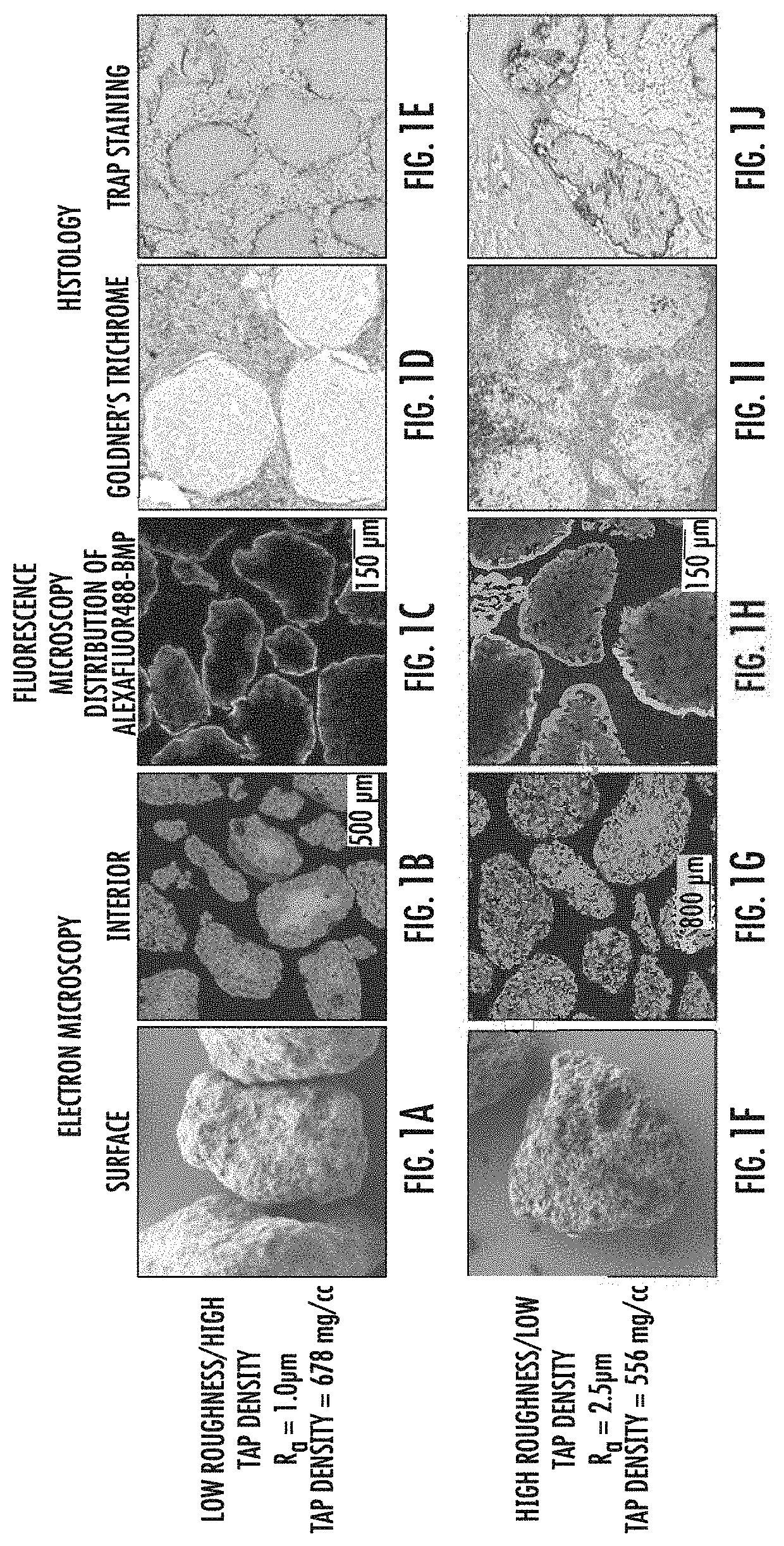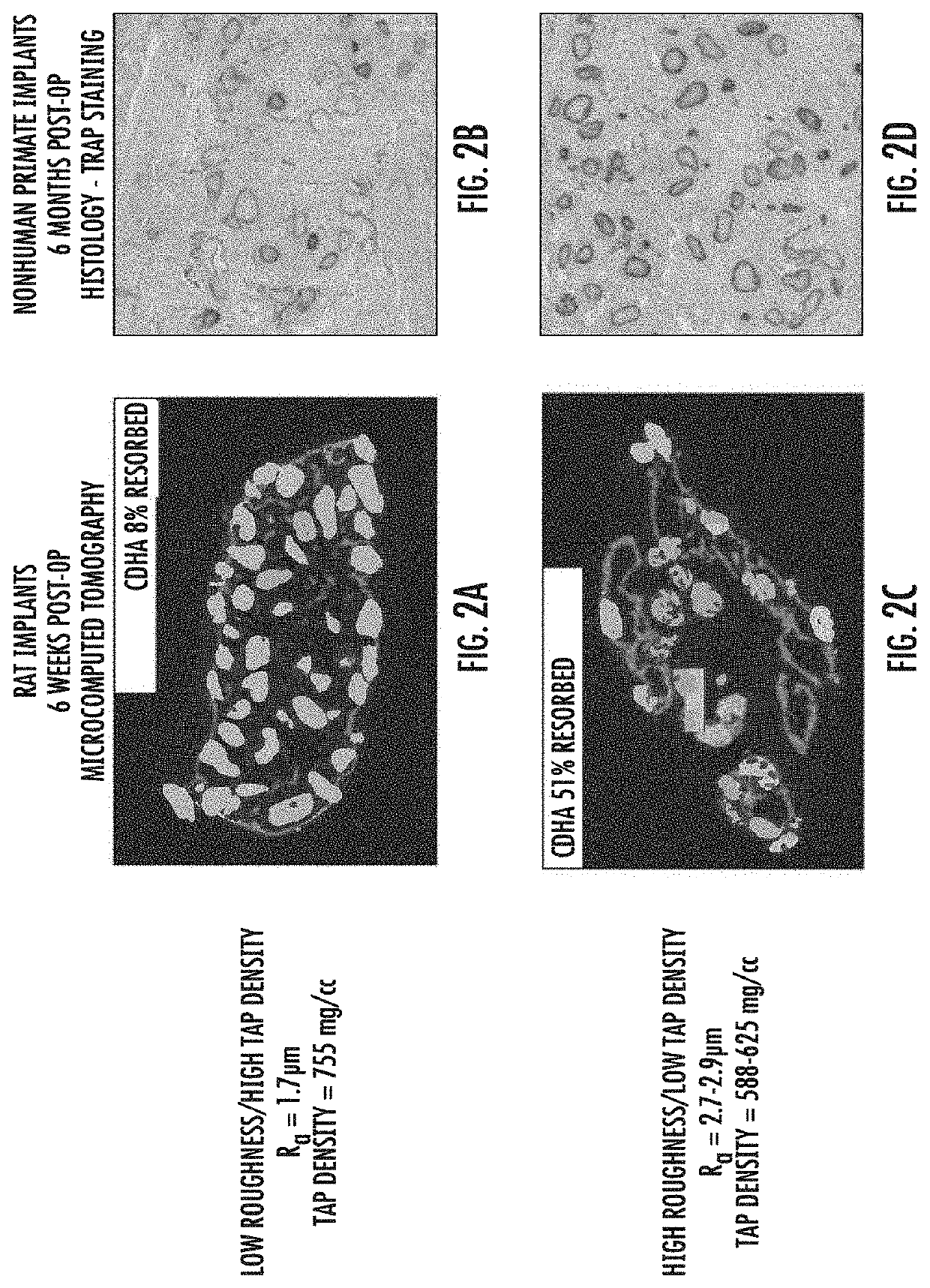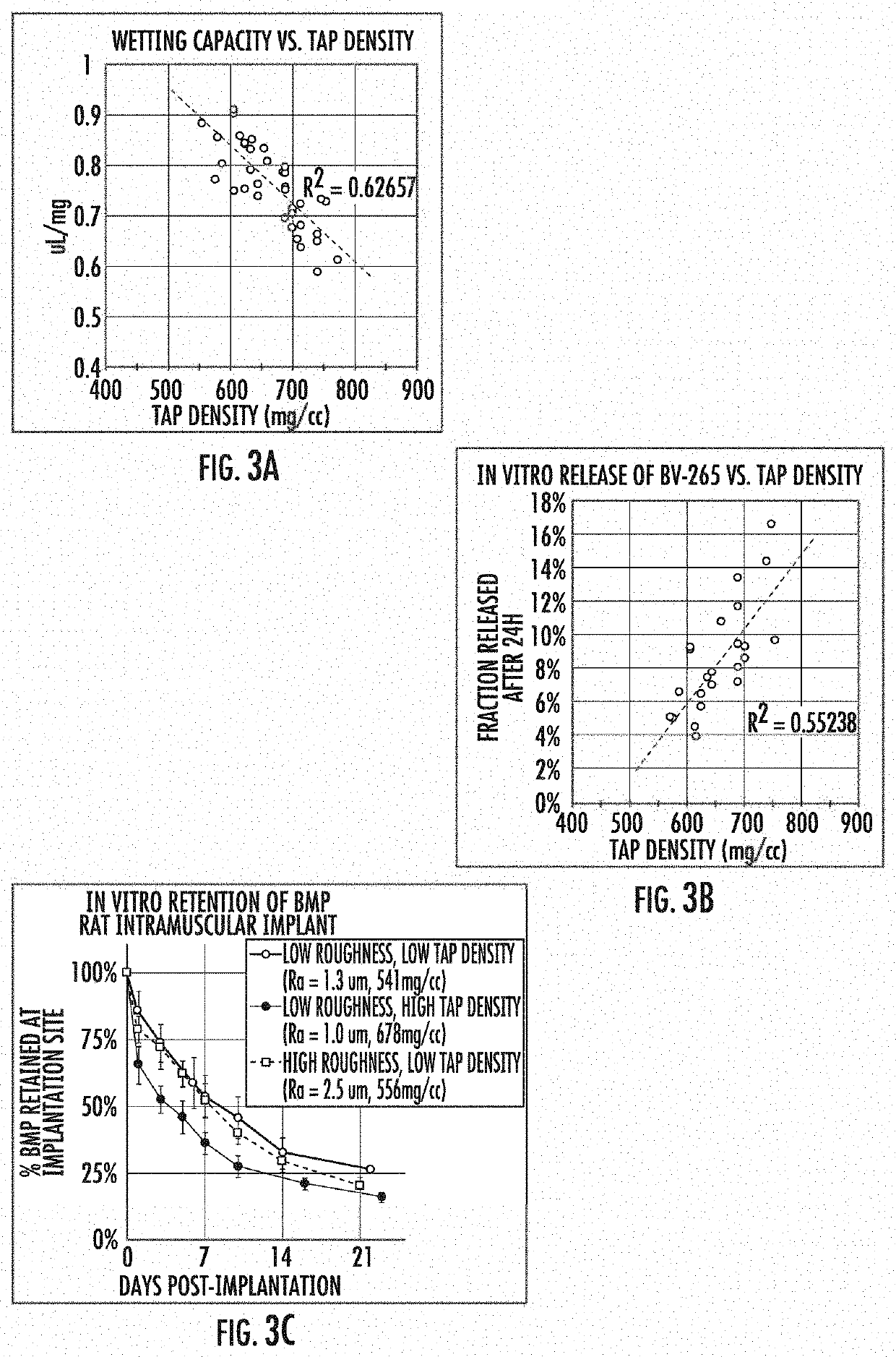Porous carrier matrix
a porous carrier matrix and matrix technology, applied in the field of porous carrier matrix, can solve the problems of limited development of high-quality osteoinductive synthetic bone graft materials, limited supply of autografts, and unsatisfactory materials, and achieve the effect of improving the loading of osteoinductive materials
- Summary
- Abstract
- Description
- Claims
- Application Information
AI Technical Summary
Benefits of technology
Problems solved by technology
Method used
Image
Examples
example 1
Effects of Surface Roughness and Tap Density on Wetting Capacity, BMP Distribution and Cell Invasion
[0042]CDHA granules were prepared as described in US Patent Application No. 2017 / 0197833, the entirety of which is incorporated herein by reference. Briefly, CDHA granules were prepared with low surface roughness (Ra) and high tap density (See FIG. 1A) or high surface roughness and low tap density (FIG. 1B). Preparations yielding granules of low Ra (≤2.0 μm) and high tap density (>650 mg / cc) were accomplished essentially as described, with a liquid to powder ratio of 3.8 mL:g, sodium hydroxide concentration of 2.4 mM, and agitation rate of 1 rpm for the chemical conversion of calcium sulfate anhydrous (CSA) template granules to CDHA granules. Granules with high Ra (>2.0 μm) and low tap density (≤650 mg / cc) were prepared with a 3-50-fold higher liquid to powder ratio (typically, 12.9 mL:g), 10-fold higher concentration of sodium hydroxide (24 mM), and a higher rate of agitation (15 rpm...
example 2
Effects of Surface Roughness and Tap Density on Resorption
[0049]Resorption of CDHA granules was investigated in collagen / CDHA constructs prepared with granules of low roughness and high tap density (FIGS. 2A and 2B) and with granules of high roughness and low tap density (FIGS. 2C and 2D). Constructs were implanted in rats at intramuscular sites along with BV-265 (a.k.a. BMP-GER-NR) and retrieved 6 weeks post-operatively. The implants were fixed in formalin and mineralized components were visualized by microcomputed tomography (uCT). Quantitative analysis of the uCT images allowed for computation of the fraction of CDHA resorbed relative to pre-implantation constructs. Constructs were also implanted in nonhuman primates (rhesus macaques) with BV-265 for posterolateral fusion of the lumbar spine. After six months, the fusion masses were fixed in formalin, decalcified, embedded in paraffin, sectioned, and stained for tartrate-resistant alkaline phosphatase as an indicator of osteoclas...
example 3
Effect of Tap Density on BMP Retention
[0051]CDHA granules were prepared as described above over a range of reaction conditions. Tap density was determined by a modified method of USP . Briefly, a defined mass of granules was poured into a graduated cylinder, tapped in a controlled manner a set number of times, and the volume ascertained from the markings on the graduated cylinder. The tap density was computed from the known mass and measured volume of the column of granules. Wetting capacity (a.k.a. water capacity) was determined by applying an excess volume of water to a known mass of granules. After incubation for 15 min, the granules were centrifuged at low speed to separate the granules from excess water not captured by the granules. The saturated granules were re-weighed to determine the change in mass due to water uptake. The wetting capacity is reported as volume of water uptake per unit mass of dry granules. In vitro release of BMP was determined by applying a sub-saturating...
PUM
| Property | Measurement | Unit |
|---|---|---|
| pH | aaaaa | aaaaa |
| Ra | aaaaa | aaaaa |
| specific surface area | aaaaa | aaaaa |
Abstract
Description
Claims
Application Information
 Login to View More
Login to View More - R&D
- Intellectual Property
- Life Sciences
- Materials
- Tech Scout
- Unparalleled Data Quality
- Higher Quality Content
- 60% Fewer Hallucinations
Browse by: Latest US Patents, China's latest patents, Technical Efficacy Thesaurus, Application Domain, Technology Topic, Popular Technical Reports.
© 2025 PatSnap. All rights reserved.Legal|Privacy policy|Modern Slavery Act Transparency Statement|Sitemap|About US| Contact US: help@patsnap.com



